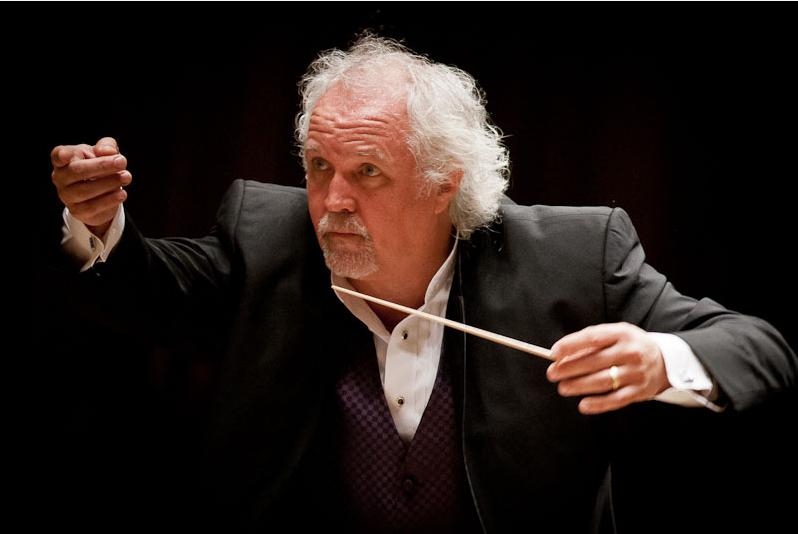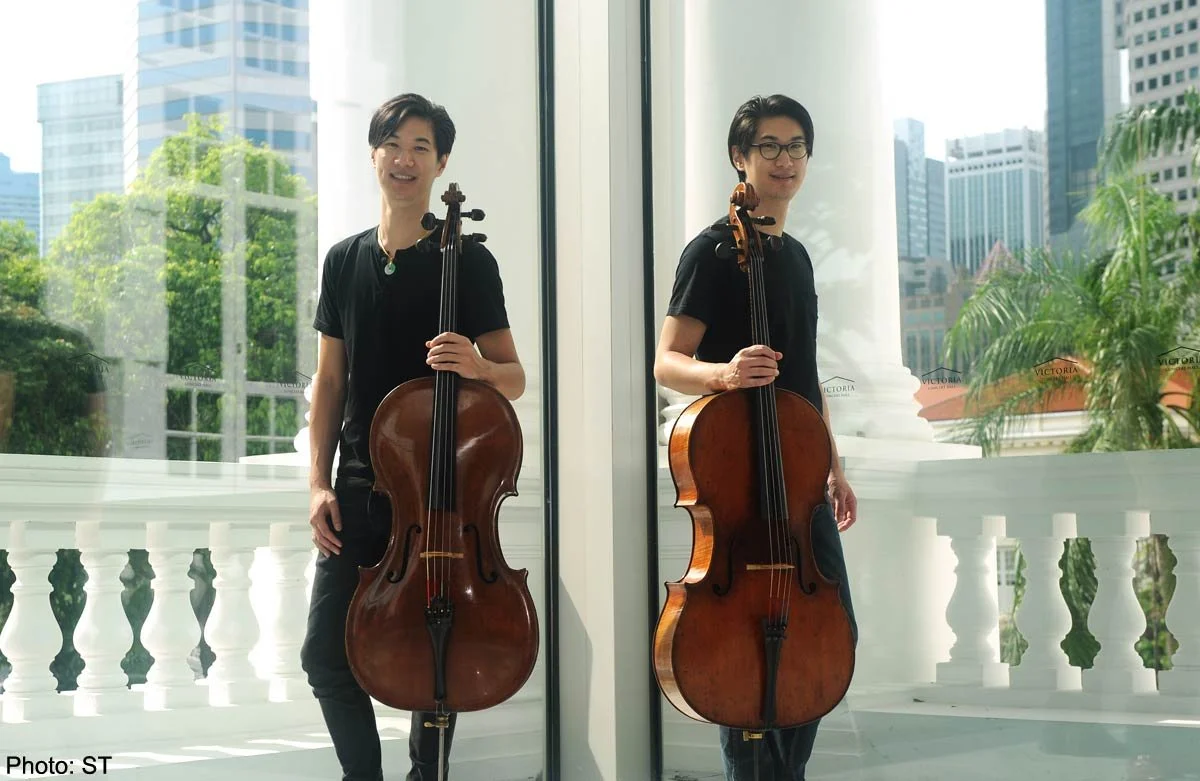Personal stories: the NZSO’s Bloch & Shostakovich
Cellist Nicolas Altstaedt: captured the full passion of Ernest Bloch’s Schelomo
Image credit: Mario Borggreve
The common thread binding all three works in the NZSO’s programme “Bloch and Shostakovich: Enduring Spirit” was, conductor Donald Runnicles told us, a “strong personal identification” between each composer and his music.
The life story behind Shostakovich’s music and his anguished struggles with power under Stalin’s regime is well-known. This 10th Symphony in E minor, his Opus 93, was premiered in December 1953, some nine months after Stalin’s death, and mostly written during that year. Although some biographers have expressed doubts about this, Shostakovich himself declared the 10th Symphony was about Stalin and the Stalin years, including a musical portrait of the repressive totalitarian dictator who led the Soviet Union for 30 years before his death.
In the Symphony, Shostakovich weaves many autobiographical threads together. His personal trials during the Stalin years are the over-arching context for the work, which has many powerfully ferocious moments. The long first movement opens with warm string sounds, developing its intense and violent anger with brass, wind and percussion in full spate, the snare drum rat-a-tat positively terrifying.
The second movement scherzo, depicting Stalin himself, is unrelentingly fast and rage-filled, and the NZSO musicians rose to the challenge magnificently. In fact, their playing throughout the 50-minute work was outstanding, with Runnicles in splendid control of both the work’s intensity and the large musical forces.
Composer Dmitri Shostakovich
…”declared his 10th Symphony was about Stalin and the Stalin years.”
In the slower third movement Shostakovich himself enters the drama using a motive based on his name – DSCH, the musical notes D, E-flat, C, B-natural, representing “Dimitri Shostakovich” – and another musical cryptogram representing Elmira Nazirova, his student with whom he fell in love. The ‘Elmira’ theme is called out movingly many times by Sam Jacobs’s French horn, but this is no gentle love story – the composer’s famous irony is ever-present from the outset, and in stark focus later as strings dance with tambourine, underlaid by sinister bass drum. The strident twining of piccolo and flute continues, the bassoon unspools a beautiful melodic line and emotions become fierce. When the volume drops a little near the end it opens space for Vesa-Matti Leppänen’s touching solo melody, a little “danse macabre” based on the opening Shostakovich theme accompanied by creepy pizzicato strings and percussion. It’s answered by the yearning ‘Elmira’ theme on horn – no happy endings here.
The fourth and final movement begins with an Andante and bittersweet moments of beauty. The NZSO’s section principals impressed throughout the night in solos and duets; here we were captured by a lovely solo melody from principal oboe Robert Orr. Runnicles expertly managed the pace to ensure such solos shone brightly. The movement winds up to a furious Allegro, fleet strings scurrying and a great climax involving the whole orchestra in a mighty conclusion. During the great ovation from the audience, Runnicles acknowledged the many fine solo and section contributions to cheers from the crowd.
Conductor Donald Runnicles
“…in splendid control of both the work’s intensity and the large musical forces.”
Joining Runnicles on the podium for a short pre-concert chat, virtuosic German-French cellist Nicolas Altstaedt spoke warmly about Ernest Bloch’s Schelomo, the main work before the interval. The title is the Hebrew name for Solomon, and this “Rhapsodie Hébraïque”, in which the cello represents Solomon himself, is the last in Bloch’s Jewish Cycle, a group of works expressing his Jewish heritage and identity.
Altstaedt gave a magnificent performance of the deeply moving work, capturing its full and wide-ranging passions with the big, soaring sound he conjures from his 18th century Guadagnini cello. The beautifully constructed composition, in three linked sections, has a dark, minor/modal tonality and Runnicles drew lovely playing from the NZSO, with many opportunities for winds and brass to shine.
In Schelomo’s dark conclusion, Stygian depths are evoked by contrabassoon alongside the cello soloist. Was the piece chosen to feature musician David Angus, retiring at this concert as the NZSO’s contrabassoonist after a 42-year career with the Orchestra? Flutist Bridget Douglas spoke warmly of her wind section colleague, telling us how much Angus’s playing, humour and collegiality would be missed. The moment offered a very human story that further engaged the audience.
The charming Altstaedt offered another intriguing personal snippet. He had discovered earlier in the day that the 1705 Goffriller cello that inspired Bloch to write Schelomo, originally intended for voice, was now owned by Rolf Gjelsten of the New Zealand String Quartet. At the interval in Wellington the two cellists met backstage to explore the historic Venetian instrument.
The ‘overture’ to the programme was a gentle, short work by a personal friend of the conductor, American composer Aaron Jay Kernis. His Musica Celestis for string orchestra is quiet, reverent and hymn-like, straying occasionally into sentimentality. The work’s lovely solo lines introduced some guest musicians - co-concertmaster Giulia Brinckmeier led the NZSO for the first half of the concert, viola section principal Caroline Henbest impressed with her resonant warm tone and Australian cellist twins Pei-Jee Ng and Pei-Sian Ng anchored the front desk of the cello section.
Australian cellist twins Pei-Jee Ng and Pei-Sian Ng
…guest musicians with the NZSO.
After the rapturous and well-deserved applause for Schelomo, Altstaedt introduced these two cellists as old friends he’d encountered unexpectedly in Wellington. Pei-Jee Ng joined him in his encore, the appealing slow movement of a sonata by French Baroque cellist-composer Jean-Baptiste Barrière.
Sometimes symphony orchestras attempt to broaden their audiences by ‘dumbing down’ repertoire and awkwardly crossing boundaries into the world of popular music. Concerts like this one and the exciting ‘Mahler 3’ a few weeks ago demonstrate that outstanding playing of substantial and profound symphonic repertoire excites and inspires audiences of all kinds. And by engaging us as well through the personal story-telling we enjoyed from both musicians and composers, the orchestra can welcome audiences old and new into their world and offer a deeply satisfying human and musical experience. More of this, please!
NZSO Bloch & Shostakovich Donald Runnicles (conductor) Nicholas Altstaedt (cello) Wellington 28 April, Auckland 29 April 2023.




